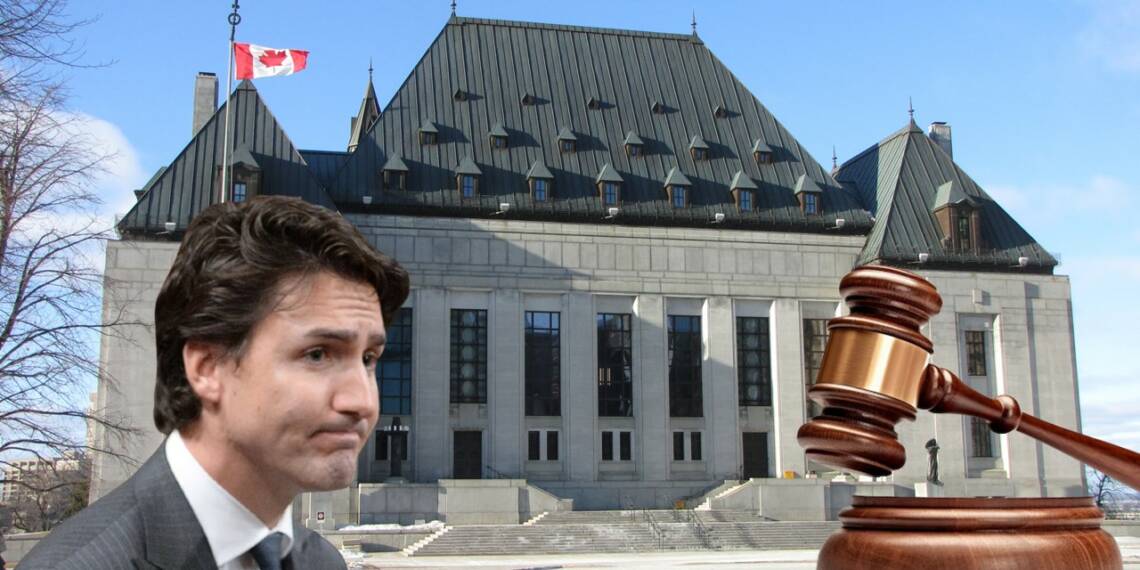In a substantial blow to the Trudeau Liberals’ environmental agenda, the Federal Court has overturned a cabinet order seeking to classify plastics as “toxic” under the Canadian Environmental Protection Act. This latest legal development, arising from a court challenge by the Responsible Plastic Use Coalition and various chemical companies, challenges the broad scope of the cabinet’s order and introduces uncertainty regarding the federal ban on six single-use plastic items.
Justice Angela Furlanetto delivered the decision, asserting that Environment Minister Steven Guilbeault’s order was “both unreasonable and unconstitutional.” Anthony Furey, Executive Director of The Stronach Foundation for Economic Rights, remarked on the court case, stating, “This does not mean the plastics ban automatically changes, but the ruling pertains to an order in council Guilbeault made, not the actual toxic substances legislation. Legal experts will surely weigh in on what can happen next.”
The implications of this court decision reach beyond the immediate setback for the Trudeau government. With a full ban on the sale and export of certain single-use plastics expected by the end of 2025, the federal government’s authority to regulate these substances for environmental protection hinges on their classification as “toxic” under the act. This includes items such as straws, grocery bags, and takeout containers.
The decision triggered a swift response from Alberta Premier Danielle Smith and Environment Minister Rebecca Schulz, who released a joint statement endorsing the Federal Court’s ruling. The statement emphasized that the federal government’s unilateral decision to label plastic as a “toxic substance” constitutes an unconstitutional intrusion into provincial jurisdiction and poses a threat to the economy.
Also Read: Guilbeault’s Provocation of Alberta ends up with Smith’s soft warning
This recent decision aligns with a broader pattern of federal overreach, reminiscent of the Supreme Court of Canada’s decision deeming the federal Impact Assessment Act unconstitutional. This pattern, exemplified by the now-invalidated Bill C-69, reflects a disregard for the constitutionally protected role and rights of provinces, using the criminal head of power.
The joint statement from Alberta further highlights the economic consequences of the federal government’s decisions, asserting that thousands of jobs and billions of dollars in investments are at risk. Alberta, home to Canada’s largest petrochemical sector, with over $18 billion in recently announced projects, sees the federal government’s actions as jeopardizing its economic interests.
Moving forward, the court’s ruling emphasizes the concept of “cooperative federalism,” asserting that the provinces are not subordinate to the federal government. According to Furlanetto’s decision, a federal head of power cannot intrude on provincial legislative competence. This echoes the sentiment that the federal ban on plastics poses a threat to the balance of federalism, as stated by the Alberta government.
This recent decision is part of a broader legal landscape, marking a continued pattern of federal overreach intended to subvert the constitutionally protected role and rights of provinces. It comes on the heels of the Supreme Court of Canada’s decision confirming the unconstitutionality of the federal government’s Impact Assessment Act, formerly known as Bill C-69.
The joint statement from Alberta emphasizes the parallel between the decisions, noting that the federal government’s decision to unilaterally label perfectly safe plastic consumer products as ‘toxic’ has wide-ranging consequences for Alberta’s economic interests. The province asserts that this approach puts thousands of jobs and billions of investments at risk, particularly in the petrochemical sector.
The Federal Court’s rejection of the cabinet order labeling plastics as “toxic” is a significant setback for the Trudeau Liberals and raises critical questions about the future of the proposed ban on single-use plastics. The ruling not only questions the validity of the cabinet’s order but also challenges the federal government’s approach to environmental regulation.








